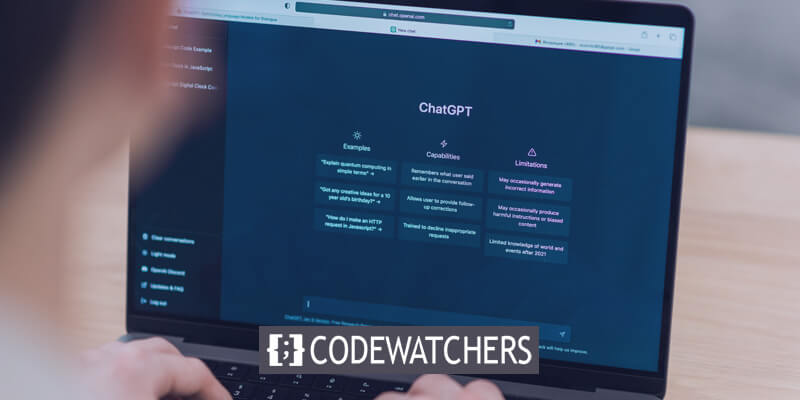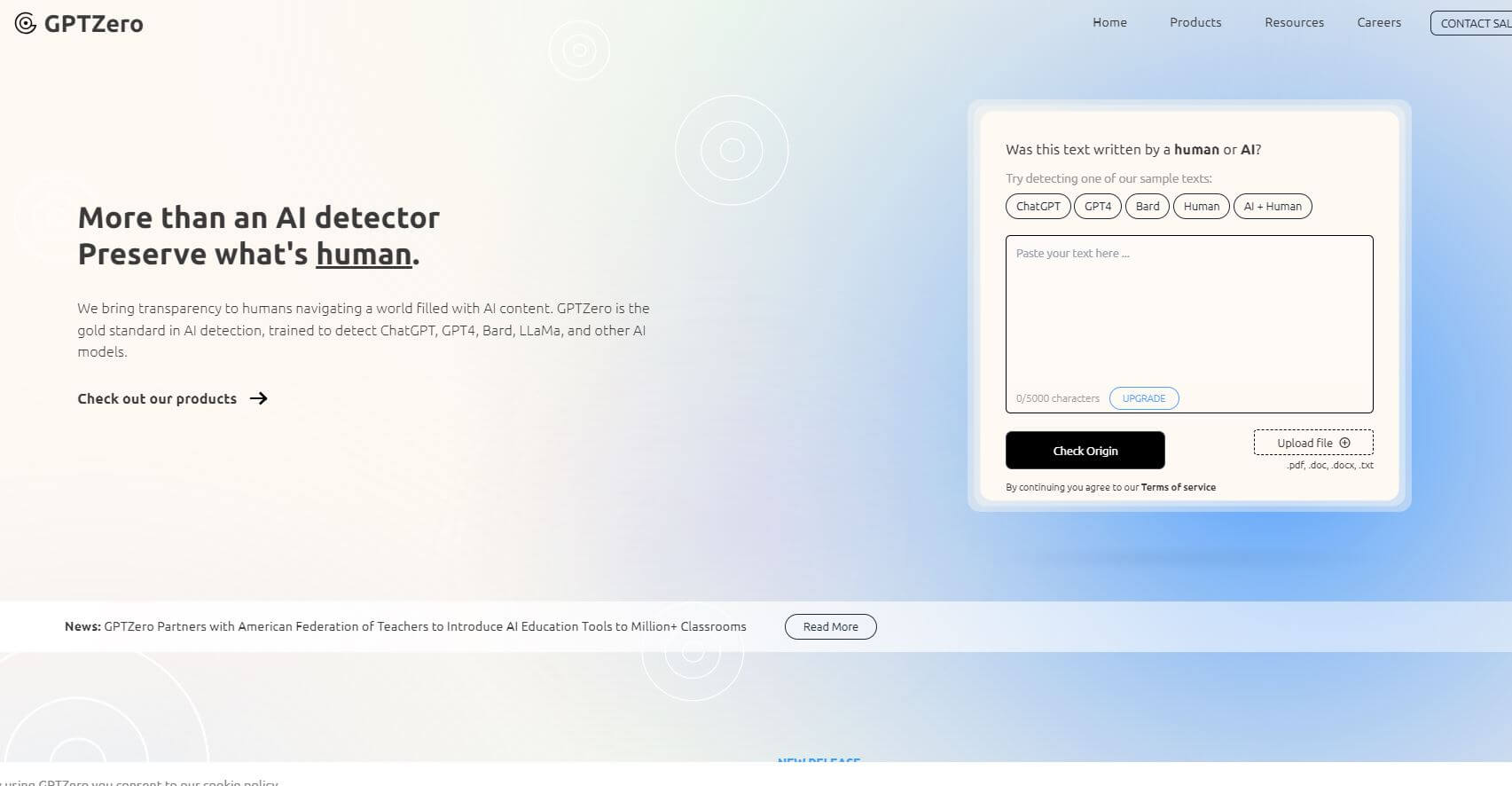AI detectors have emerged to tackle AI-generated content on the internet. ChatGPT recently rattled the content writing area, and now a person can't identify which content is authored by another human and which is generated by AI. For example, Google can detect AI content, despite their assertion that they are not against AI-enabled written content.

Google has not directly benchmarked the impact of AI-written content on SEO, but it does offer a more serious issue when it comes to employing AI-powered technologies to create content - plagiarism. AI-powered writing tools tend to plagiarise written content since they are built on top of Large Language Models (LLMs) that have been trained on billions of pages of data in the form of books, news, and internet articles.
Despite this problem, according to a recent Gartner estimate, 70% of firms will be experimenting with immersive technologies, including AI content producers, for both consumer and enterprise use by 2022. Another 25% will put these technologies into use.
What is an AI Content Detector?
AI content detectors are technologies that look for AI imprints in content. They use statistics to determine whether a piece of written content was generated by a human or an AI. The emergence of systems like ChatGPT, which generate well-written content from a well-constructed prompt, has made distinguishing between human-written and AI-written content more difficult.
How AI Content Detector Work?
It is crucial to understand how AI-generated material is created in order to better grasp how AI detectors perform. Natural Language Processing (NLP) techniques are used to create AI-generated content, which allows computers to emulate human language patterns using massive Language Models (LLMs) trained on massive datasets. AI detectors work backwards.
AI detectors (often AI writing detectors) use language models to predict the chance of a machine writing a word or phrase in a sentence. Their forecast is used to determine how human-like the content is.
Who Needs AI Content Detection Tools?
As the amount of AI-generated content online grows, there is an increasing need for ways to reliably detect it. Major online platforms like Google, Meta, and others have already highlighted detection of AI content as an important priority.
For organizations and individuals managing online communities and content, AI detectors may soon become an essential tool. Without ways to identify machine-generated text, audio, images and videos, it will only become easier for bad actors to distribute misleading, stolen, or low-quality AI content on the internet. Here are some sectors where ai content can destroy image.
- Online platforms - To uphold content policies and community guidelines around automation and spam
- Social networks - To identify inauthentic activity from fake accounts and bots
- News organizations - To detect fabricated reporting and doctored media
- E-commerce sites - To find fraudulent reviews and spam content
- Cybersecurity teams - To recognize phishing attempts, impersonation, and other threats
- Academic institutions - To detect AI-generated student submissions
- Legal system - To determine source and legitimacy of evidence
The ability to separate human-created content from machine-generated imitation will only grow more vital as AI capabilities continue advancing rapidly. Organizations and specialists focused on online trust and safety, cybersecurity, fraud detection, and digital forensics are likely to be among the first to widely adopt and integrate AI content
Best AI Content Detectors Worth Trying
AI should be regarded as a strategic partner in content creation, offering assistance, speed, and scale to your team's efforts. However, in today's digital landscape, maintaining your brand's integrity and reputation is critical. These AI content detectors can help you achieve the best of both worlds with large-scale efficiency, particularly when used to supplement, rather than replace, human judgment and intuition.
OpenAI’s GPT-3 Detector

OpenAI has created its own internal tool for detecting text and content generated by AI systems. Trained on both human and AI-written datasets across diverse topics and formats. Also utilizes data from retraining examples and InstructGPT prompts. In initial tests, achieved 26% accuracy on classifying short samples as "likely AI-generated". Detection reliability increases for longer form text. Primary goal is combating false claims of human authorship on AI content to address issues like misinformation campaigns, academic dishonesty, and chatbots posing as humans.
Key Features
- Internal OpenAI capability
- Trained on AI and human datasets
- Uses retraining and InstructGPT data
- 26% accuracy on short samples
- More reliable on long form text
- Fights AI content attribution fraud
Scale AI Detector

Content at Scale is a free AI content detector that identifies probable word combinations statistically associated with machine-generated text. Trained on billions of pages, it analyzes predictability, probability patterns to increase accuracy. Breaks down written content into metrics of predictability, probability, and pattern matching. A key benefit is relevance - unlike some detectors, it scans for all GPT versions including GPT-4. Primary use cases include academics, SEO, marketing, and education to detect AI-generated content.
Key Features
- Detects all GPT versions
- Billions of pages training data
- Analyzes predictability
- Identifies word patterns
- Statistical probability matching
- Relevant for current AI models
Originality.ai

Originality.ai accurately identifies AI-generated content from tools like ChatGPT, GPT variants, and Google's Bard. It also detects paraphrasing by QuillBot in existing text. Tailored for content marketers, agencies, and site owners to detect plagiarism and ensure unique human-written content without AI imprints. Scans edit histories and allows team management with unlimited members and automatic billing. Focused on empowering 'serious' online publishers to combat AI content generation with features like unlimited AI detection scans and paraphrase checking.
Key Features
- Detects all major AI writing tools
- Checks for QuillBot paraphrasing
- For publishers and content teams
- Team management abilities
- Unlimited scans
- Edit history scanning
GPTZero

GPTZero is an AI content detector primarily focused on identifying ChatGPT-generated text, especially for academic use cases. It analyzes texts using two main plagiarism indicators - "perplexity" and "burstiness". Perplexity measures how familiar GPTZero's training is with the content, lower scores indicate more AI-generated text. Burstiness compares sentence variation, AI-written content has lower scores due to less variation. Made for detecting AI text like ChatGPT essays or assignments. Provides a free tier for limited checks and a pro version supporting bulk file uploads.
Key Features
- Detects ChatGPT content
- Perplexity indicator
- Burstiness indicator
- Built for academics
- Free and paid tiers
- Bulk file upload
Writer AI Content Detector

Writer.com provides an easy-to-use AI detection tool alongside its suite of AI writing capabilities, allowing users to analyze content for AI fingerprints before publishing. It detects the likelihood that analyzed text was machine-generated, returning a percentage score and suggestions for improvement. Designed for quickly checking short content samples up to 1500 characters. Offers a straightforward AI detection capability that content creators can easily integrate into their workflows to verify human authorship. Part of Writer's robust AI writing platform focused on natural language generation applications.
Key Features
- Easy-to-use interface
- Percentage score
- Improvement suggestions
- 1500 character limits
- AI writing platform integration
- Quick analysis
Where Can I Find Best Quality Ai Assisted Writing?
There's no question AI-powered writing tools can be incredibly helpful for content creators and teams with more advanced needs. Sophisticated plugins like 10Web AI Writing Assistant and Writer exist for good reason - they optimize workflows and accelerate creation without sacrificing quality. ChatGPT itself enables efficient research in a fraction of the time. But when used thoughtfully as an assistant, not as a crutch, AI can elevate the human writing process.
One compelling tool to consider is 10Web AI Writing Assistant. It provides AI-generated suggestions and adjustments to improve SEO, readability, structure and more. With 20+ templates, it can help overcome writer's block. The assistant also creates outlines, drafts meta descriptions and titles, fixes errors, improves paragraph length, and optimizes sub-headings.
Rather than blindly generate content, the greatest value comes from using 10Web's suggestions to spark creativity and match the writer's style and narrative. It's the best of both worlds - AI acceleration with a human touch. And by keeping the writer in control, quality remains reliable while plagiarism and detection concerns are minimized. The future is AI-assisted human writing, not pure AI-generated content. With the right balance, it's a win-win.
Wrapping Up
The rise of advanced AI generative models has sparked valid concerns about properly detecting and attributing AI-created content. But used ethically as a writing assistant, rather than as a wholesale content creator, AI holds great promise for boosting human creativity and productivity. The ideal solution is a thoughtful balance - embracing AI tools to enhance the writing process while utilizing detection technologies to uphold integrity where needed. With the right approach like 10 Web's assistive writing, writers can have the best of both worlds - accelerated workflows combined with fully original and authentic content. AI is neither a threat nor a panacea, but rather a powerful tool to wield with care. Maintaining responsible human oversight, while letting AI elevate the human creative process, is the wise path forward.











